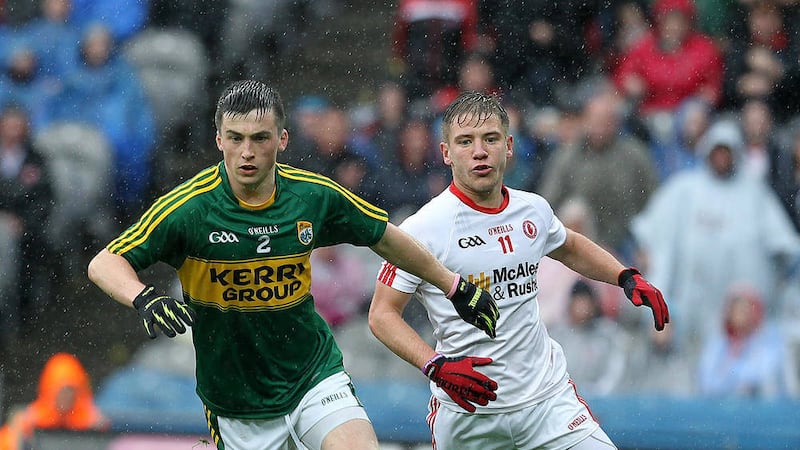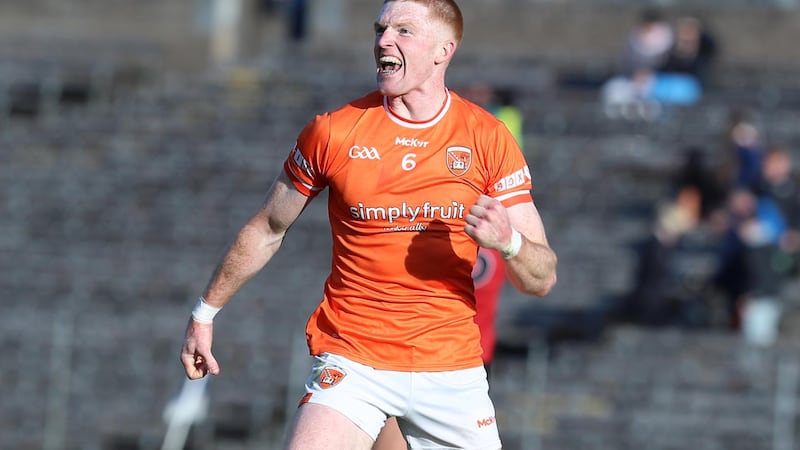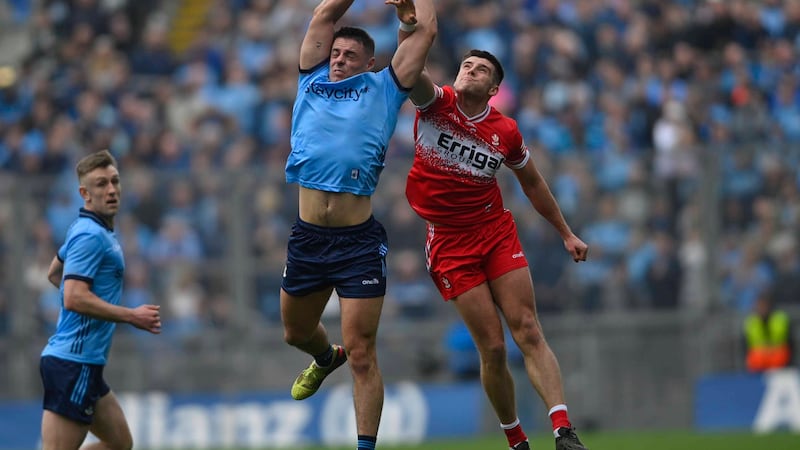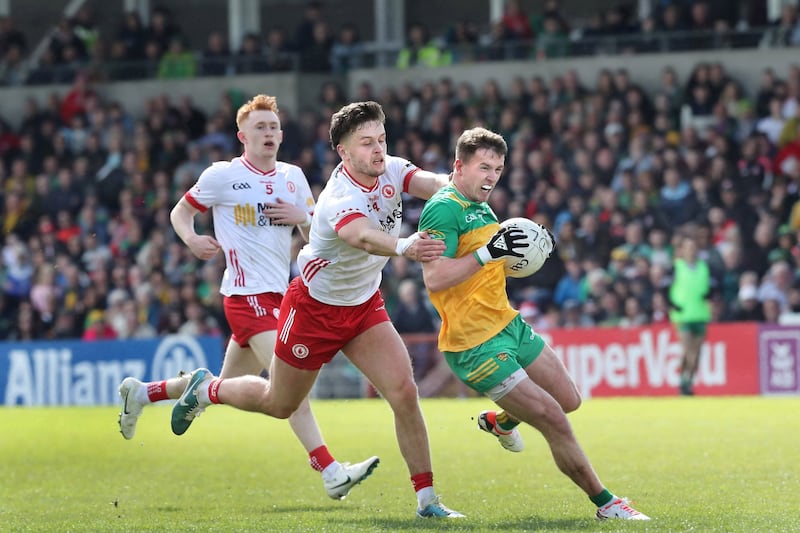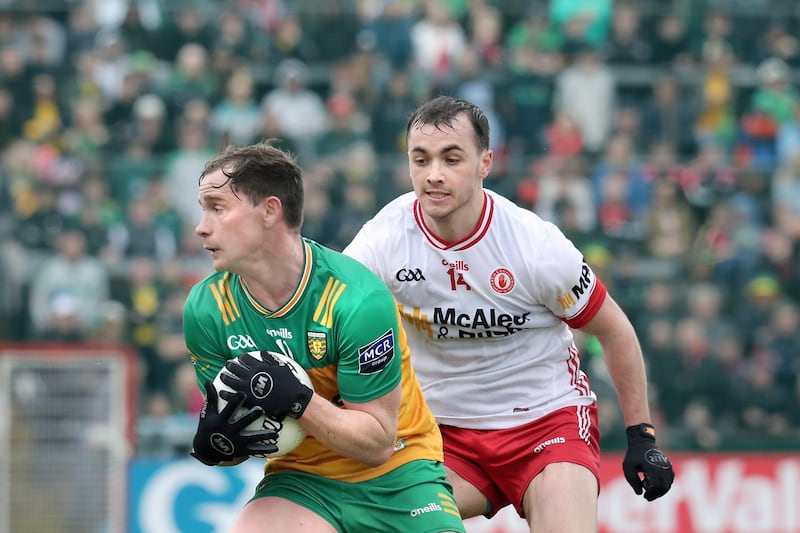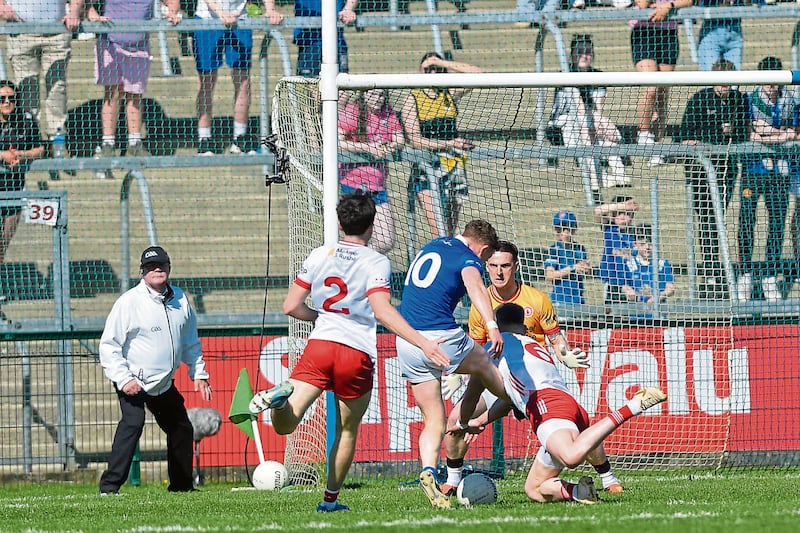TIME is on Tyrone’s side, it seems – but not for as long as people might think.
After last Sunday’s hard-fought All-Ireland SFC semi-final defeat by reigning champions Kerry, Red Hands skipper Seán Cavanagh cited the average age of the Tyrone squad as 24 and, indeed, the ages listed in the match programme for the 26 players selected by Mickey Harte do average out at exactly 24.5.
However, the average age of the actual Tyrone starting side was just over 25, that slight difference due to them having more younger players on the bench. Although that figure of 25 may seem low, the contention that Gaelic football is increasingly becoming ‘a young man’s game’ is borne out by looking at recent All-Ireland winners.
Dublin’s 2013 lineout was younger than last Sunday’s Tyrone team (average age 24.8 years), and the Dubs’ triumphant 2011 team was not much older, at slightly under 25-and-a-half years. Current champions Kerry have had the oldest winning side of recent times, averaging 26-and-two-thirds last season.
Somewhat surprisingly, given widespread perceptions of them, Donegal 2012’s average age was 25.8 years, with the likes of Rory Kavanagh, Neil Gallagher, and Colm McFadden balanced out by the then 23-year-olds Michael Murphy, Leo McLoone and Paddy McGrath, plus Mark McHugh (22) and Patrick McBrearty, who was still a teenager then.
Kerry’s experience certainly told last Sunday. Although there were some personnel changes from last year, their average age was, as expected, almost a year on from their hard-fought victory over Donegal, close to 28-years-old. With almost three years’ more of know-how per player, the Kingdom’s composure and greater familiarity with Croke Park told in the end, aided by some dubious officiating.
Starting with around 42 more years on the pitch than Tyrone in the pre-match parade last Sunday, they were also able to add more to their average age off the bench, by sending on two 29-year-olds (Sheehan and Darran O’Sullivan) and a 35-year-old – Aidan O’Mahony – for players aged 27, 24 and 25 respectively. Having said that, there’s no doubt their most important substitution was replacing 32-year-old captain Kieran Donaghy at half-time with 24-year-old Paul Geaney, while 25-year-old Barry John Keane scored a point despite only coming on in injury time for 31-year-old Donnchadh Walsh (many observers’ man of the match).
A large part of the managerial art is getting that much-vaunted blend of youth and experience right. Take Seán Cavanagh out of the Tyrone attack – and I’m not suggesting for a split-second that they should actually do that – and the average age of the other five starting forwards was just over 22, even if you count Peter Harte as a forward and Tiernán McCann as a wing-back (because they’re both 24).
Tyrone may want to put some younger legs into their defence, but then that’s always an area where there’s a need for experienced heads. Justin McMahon (29), Cathal McCarron (28) and Aidan McCrory all played well last Sunday, as they have done all season.
While, next season, those young Tyrone attackers will be another valuable year older, those aforementioned defenders will also be another year older and may not be able to make as many lung-bursting runs forward or be quite as sharp in their reactions, sprints and turns as they were this year.
The first target for Tyrone next year – and indeed every county – will be to win their provincial championship. That applies as much to those setting their sights higher, on the All-Ireland title, as to those counties that haven’t won a provincial championship in a while (or ever). That’s because this will be the fifth consecutive season that the Sam Maguire Cup will be collected by a team that has not lost throughout their Championship campaign.
Indeed, Tyrone have been the only non-champions to even reach the All-Ireland semi-finals since 2010, having also done so in 2013. Putting that another way, 90 per cent of football’s All-Ireland semi-finalists in the most recent half-decade have been provincial champions.
Looking at Tyrone’s main rivals for the 2016 Ulster title, the Monaghan team which started this year’s final in mid-July had an average age of just over 26-and-a-half. Their only 30-somethings were Dessie Mone, Vinny Corey and Owen Lennon, although the latter is 34. Donegal, who were contesting their fifth consecutive Ulster final, had an average age of 27-and-a-quarter. The problem for them is they included six starters in their 30s, namely Paul Durcan, Éamon McGee, Karl Lacey, Neil Gallagher, Christy Toye and Colm McFadden.
Of course, knowing precise dates of birth could make the actual average ages of a team slightly higher; for example, Bryan Sheehan turned 30 on Tuesday, but was correctly listed as 29 in last Sunday’s programme, while Anthony Maher will celebrate his 29th birthday this coming Saturday.
That aspect reminds me of a brilliantly entertaining online spat which took place between two Arsenal fans recently. One of them was irked by criticism that the club was considering purchasing a player who was 'almost 29’, contending that the purported target wasn’t 29 until he actually turned 29. The other supporter argued passionately that the player in question was no longer 28 from the very day after his 28th birthday. For the record, Jackson Martinez at the time was around 28-and-three-quarters. Adrian Mole, anyone? (Google him if you’re aged under 40 and 3/4).
The key element remains the ability of the player to perform on the highest stage. While youngsters can be thrown into the fray, being told 'If you’re good enough, you’re old enough’, equally more senior players should be retained on the basis that 'If you’re good enough, you’re young enough’.
